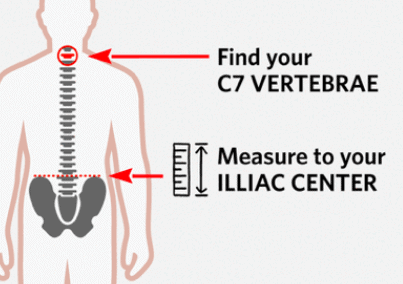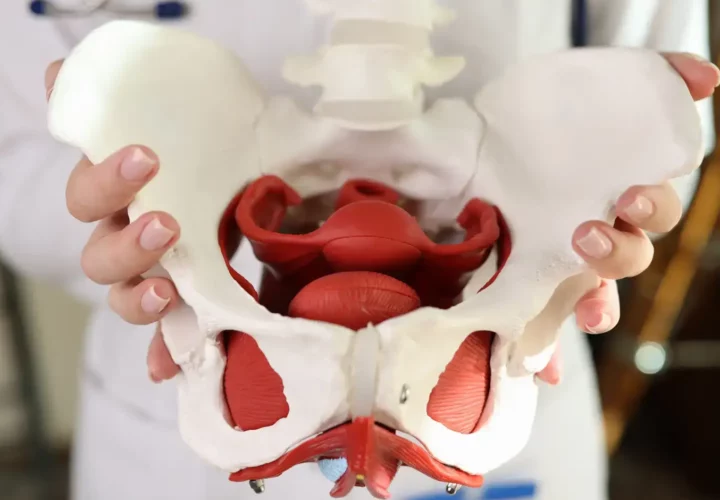Though I loved having my mom and dad spend money every year on a new backpack, I hated wearing it as I got older. I always had my laptop, a binder, some folders, pencils, pens, a phone charger, sometimes even a change of clothes in my backpack. Sometimes I was even carrying a book or two in my arms because there were so many things inside my backpack there was no room or the weight was too much for me. I also had no idea how to properly wear my backpack. So sometimes the body of the bag was near my butt because I had the straps so loose, while other times the straps were so tight the body of the bag was at the top of my back. Honestly up until two years ago I had no idea that wearing my backpack improperly affected my back the way it does. All those years of wearing my backpack on one shoulder or with loose straps probably explains my horrible back pain at 22 years old. Proper backpack wear is so important. If worn incorrectly, backpacks can strain muscles and joints.
Vertebrae make up the spine, 33 of them to be exact. Between each vertebrae are discs. These discs act as natural shock absorbers for the vertebrae. When your backpack is filled with a laptop, folders, and a binder it becomes heavy. The force of this weight pulls you backwards and in return you will compensate by bending forward slightly or arching your back. This causes an unnatural compressing of the spine which is where back pain comes into play. Some people even receive neck pain and shoulder pain from this.
More than 7,000 kids a year are injured due to overloaded backpacks. The weight of a backpack should not exceed more than 10-15% of the child’s weight. Unfortunately, most backpacks weigh 20% of a child’s weight. Every year 10-19% of children have to miss school or sports because of pain created from backpack use. 30-50% of adults complain of pain related to backpack use every year too.
How to Properly Fit a Backpack
Measuring your backpack for proper fitting is super easy.
The first step is to measure the torso length. To do this, grab a soft measuring tape. Tilting the head forward helps  make it easier to find the highest protruding knob at the base of your neck which is the C7 vertebrae. This is the starting point for your measuring tape. Tilt the head back up and run the tape straight down the spine until you reach the Iliac Center. This is the point in the center of your spine that aligns with the highest point on your hipbone.
make it easier to find the highest protruding knob at the base of your neck which is the C7 vertebrae. This is the starting point for your measuring tape. Tilt the head back up and run the tape straight down the spine until you reach the Iliac Center. This is the point in the center of your spine that aligns with the highest point on your hipbone.
Secondly, you will pick your backpack size. Knowing your torsos length helps you know the size. Extra Small backpacks run from 14-16″ while small backpacks run from 16-18″. Medium backpacks run 18-20″ while large backpacks run 20-22″.
The third step is trying on the backpack. Putting about 15 lbs in the backpack itself will help provide a more accurate measurement when doing this step. The shoulder straps should wrap over the shoulders smoothly. At about 3 inches below the top of your shoulders , the straps should start to wrap onto your back. If the shoulder straps start lower than 3 inches then try a larger size. If you choose a backpack with a hip belt, then it is crucial the top edge of the belt sits at 1″ above the iliac crest shelf.
, the straps should start to wrap onto your back. If the shoulder straps start lower than 3 inches then try a larger size. If you choose a backpack with a hip belt, then it is crucial the top edge of the belt sits at 1″ above the iliac crest shelf.
Lastly, the sternum strap. This strap helps keep the shoulder straps in place and correctly positioned on your body. It should be b uckled right over the chest at heart height. If the shape of the shoulder straps are distorted or the strap gives you problems breathing, try loosening the strap. If the problem does not go away, then try a different backpack.
uckled right over the chest at heart height. If the shape of the shoulder straps are distorted or the strap gives you problems breathing, try loosening the strap. If the problem does not go away, then try a different backpack.
Proper backpack wear is so important. If you are unsure about your child’s backpack size, it wouldn’t hurt to get their doctors opinion.



